On July 29, 2011, Chief Judge Royce C. Lamberth of the U.S. District Court for the District of Columbia ordered the National Archives and Records Administration (NARA) to unseal the June 23–24, 1975 testimony of former President Richard Nixon before a grand jury, along with related documents that were a part of the ongoing investigation by the Watergate Special Prosecutor. The testimony and related material has been the subject of speculation by historians and students of Watergate. But this secret material—originally sealed under Rule 6(e) of the Federal Rules of Criminal Procedure relating to grand jury testimony—is now available.
At the time that Public Citizen filed the petition requesting that the court unseal this material, I wrote a broad overview about the case. Because the matter was pending, and I had no idea how it might turn out, I decided then not to share all that I knew about how this case came to be filed: a question I have been asked and have privately explained. Now that the matter has been resolved, I can publicly discuss this background.
It should be noted that there are a number of Nixon apologists who do not want the true facts and record of that presidency, as it relates to Watergate, to become public, and when such information does surface, they do their best to distort it. For this reason, I have long believed that history is best served by making all the essential information available, because it speaks for itself. That is, fortunately, what has now occurred here.
Accessing the Last Real Watergate Secrets
In March 2010, I spent several weeks at NARA’s College Park, Maryland, facility doing research for my work-in-progress on the Nixon presidency and Watergate. I am trying to understand how that presidency imploded. Of course, we all know the general outline of the story, but the real details have remained buried—and they tell the complete story. These vital details about how the Nixon White House dealt with Watergate are, in fact, available in the historical record, albeit not readily.
There are two uniquely important primary sources, which have been largely ignored by historians (and others): Nixon’s secretly recorded conversations, and the files of the Watergate Special Prosecution Force (WSPF). This material answers most all of the key questions about how Watergate was handled by Nixon and his aides, but it is not easily accessible, nor it is inexpensive to acquire the information. It is, in fact, a massive record. To understand this history, however, it is indispensable for those interested to understand the full record.
For several years, I have had a team of transcriptionists working on the recorded conversations. There are over 2,000 of them relating to Watergate, and when I began, less than 100 had been fully transcribed. Watergate historian Stanley Kutler published a book containing partial transcripts of some 320 Watergate-related conversations, and the WSPF did drafts (including a few final drafts that were used during trials) of another 80 conversations. All these earlier transcripts were prepared using analog equipment. Today, these recordings can be digitized, and while they are still extremely difficult to transcribe, there is software that can enhance and improve the quality of the sound for transcribing. While I am not doing a book of transcripts, to do the work that I have undertaken, I need to know everything that Nixon knew about Watergate, and when he knew it.
When prosecuting crimes at the Nixon White House, the WSPF amassed vast amount of information that is also relevant to this study. While it was not my first visit to NARA’s College Park, MD facility to work with the WSPF files, my March 2010 visit was one of my longer efforts with this massive collection. There are literally hundreds of thousands of pages in these files, which are known as Record Group 460. Fortunately, David Paynter, the archivist in charge of this material, has it well organized.
It was during this visit that I realized that Nixon’s grand jury material, along with the material prepared by the WSPF in preparation for Nixon’s appearance and following it, contained some important information, but it was not available to researchers. It had been sealed by NARA under Rule 6(e). When bemoaning this fact to a friend, Alan Morrison, I found a solution.
The Public Citizen Litigation Group Takes the Case
Alan Morrison is currently an associate dean at George Washington University School of Law, which was where we spoke. After I told him of my research problem, he said that there was a way to get the information unsealed. He explained that grand jury testimony had been unsealed in the Alger Hiss case; and in the Julius and Ethel Rosenberg case; both under a ruling of the U.S. Court of Appeals for the Second Circuit. Alan said that such matters were within the discretion of the Chief Judge of the District where the federal grand jury was seated, and that, if there were compelling reasons to do so, the Chief Judge could unseal the grand jury material. Historical importance, he said, was such a reason.
More importantly, Alan said that he thought this case might be of interest to the Public Citizen Litigation Group, which he had co-founded with Ralph Nader in 1972, and had headed for some twenty-five years, before departing for the academy. One of the organization’s many successes had been representing the historian Stanley Kutler, for whom they filed the lawsuit that forced NARA and former president Nixon to release the Watergate tapes relating to the abuse of government power sooner rather than later. They had, consistent with the relevant statute, acquired this material from Nixon, who was stalling the process while he was alive.
Alan mentioned the potential of unsealing Nixon grand jury material to Allison Zieve, who is currently the head of the Public Citizen Litigation Group. A few days later, she emailed me to report that she was very interested. I explained why I believed this was important historical information, and that I was willing to assist in any fashion possible with such a lawsuit. I suggested that Stanley Kutler would make an excellent lead petitioner, given the fact he had worked with Public Citizen before. She agreed, and when I called Stanley, so did he, and the rest, as they say, is history.
While I was also able to assist Allison in obtaining the cooperation of several key people to submit declarations in support of the petition, Public Citizen did all the heavy lifting and filed a powerful brief in support of the petition. As I mentioned in my earlier column, I was confident that they would prevail in the Second Circuit, but it was unclear to me how the D.C. Circuit would handle the case. As we now know, Judge Lamberth adopted the law that had been established in the Second Circuit.
There Was Only Nominal Opposition to the Petition
I was not surprised that the Obama Justice Department filed an opposition to the petition to unseal the grand jury material. But the filing was almost pro forma, as if the Department of Justice felt they had to (but perhaps did not really want to) oppose it. Prosecutors like these secret proceedings, and want to keep them secret. But when Judge Lamberth ruled against the Obama Justice Department, it did not appeal.
There was an attempt to file an opposition, though, and I was surprised by its source: former Nixon White House junior level aide Geoff Shepard, who had worked on the staff of the Domestic Counsel.
Shepard, who graduated from law school, spent his career in the insurance industry after leaving the White House. More recently, he’s become an active Nixon apologist and conspiracy buff, who published a book titled: The Secret Plot to Make Ted Kennedy President, Inside the Real Watergate Conspiracy (2008). I have not read the book. When I first learned of it, I happened to be talking with the person for whom Shepard worked at the Nixon White House. He told me that he had warned Shepard that he was, in essence, making a fool of himself with his account. This was advice from a person who is intimately familiar with Watergate and has written about it. It was correct, but this fact has not deterred Shepard from proceeding accordingly.
In a similarly fatuous fashion, Shepard tried to intervene in the Public Citizen case I described above, to oppose the petition to unseal Nixon’s grand jury testimony. However, Judge Lamberth denied his request. Shepard then totally flip-flopped and filed a petition requesting the court unseal virtually everything relating to Watergate held by NARA, all the grand jury proceedings, all the Senate Watergate Committee material, the records of the House Impeachment Inquiry of Nixon, and all the WSPF trial materials relating to Watergate. Shepard’s petition appeared to be an effort to stall the effort to unseal Nixon’s testimony. But it failed. When granting the motion to unseal Nixon’s testimony, Judge Lamberth issued an order denying Shepard’s request(s), while pointing out their complete failure.
Judge Lamberth’s Ruling
In short, there was no real opposition to the petition to unsealing Nixon grand jury testimony, so it came down to Judge Lamberth’s judgment on the matter. His decision is now the controlling law for federal grand juries in the District of Columbia, where a lot of history unfolds behind the closed doors of such grand jury secret proceedings—and remains sealed forever. But now, as Judge Lamberth made clear in his ruling, nothing “prohibits historical interest, on its own, from justifying the release of grand jury material in an appropriate case.” Thus, this ruling was good not only for those seeking to know the true history of the Nixon Administration, but also for all historians who seek to access grand jury records.
Public Citizen provided clear and compelling evidence for Judge Lamberth to make “a nuanced and fact-intensive assessment” that justified the unsealing of Richard Nixon’s grand jury testimony. That testimony shines light into a few dark corners of the Watergate story, as I will explain in my work-in-progress. Meanwhile, the material is now available at NARA online for all who are interested in this history to draw from, rather than merely speculate about. The proceeding shows Richard Nixon in good form, at times fascinating and even unintentionally comedic, while at other times, demonstrating the type of thinking that got him in trouble as president.
History can thank Stanley Kutler, and the other petitioners who joined him, the sixteen people with knowledge of Watergate who filed declarations providing facts and information to the court; Alan Morrison for the suggestion; and most importantly, Allison Zieve and the Public Citizen Litigation Group for assembling a powerful and persuasive case for Judge Lamberth’s consideration. History will never quibble with his ruling.







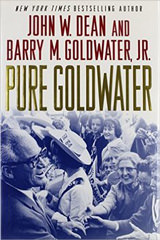
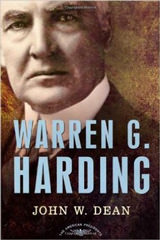
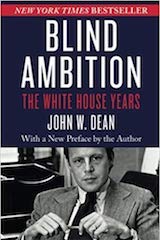
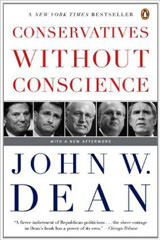
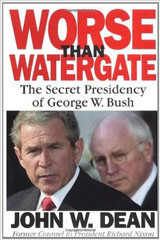
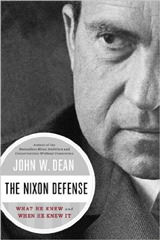
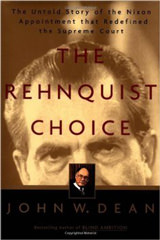
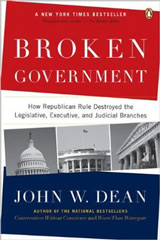
[…] title to my post? It comes from a recent article by John W. Dean, former White House counsel. (Hat tip to my friend, former Nixon chief of staff […]